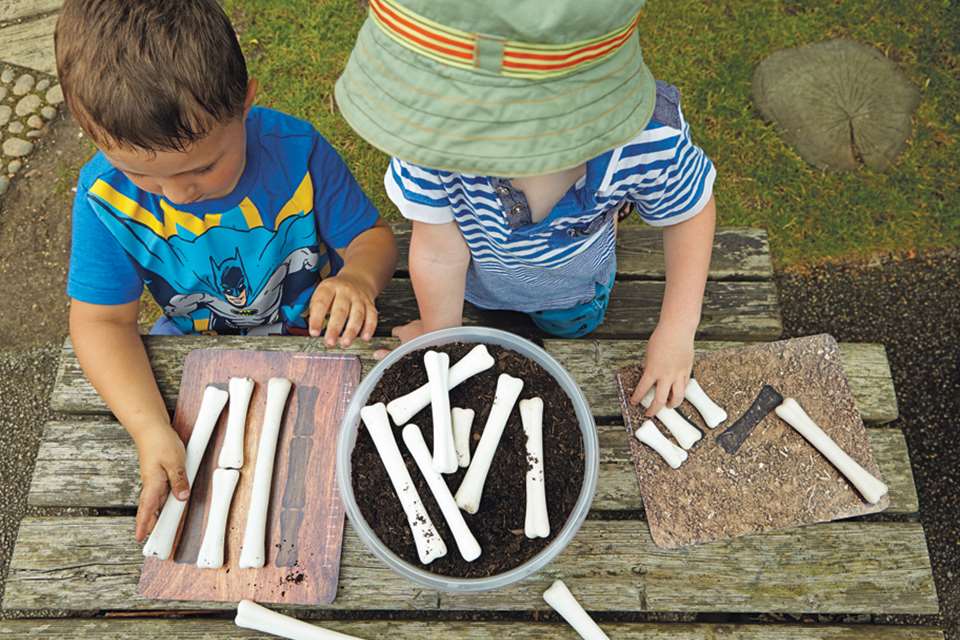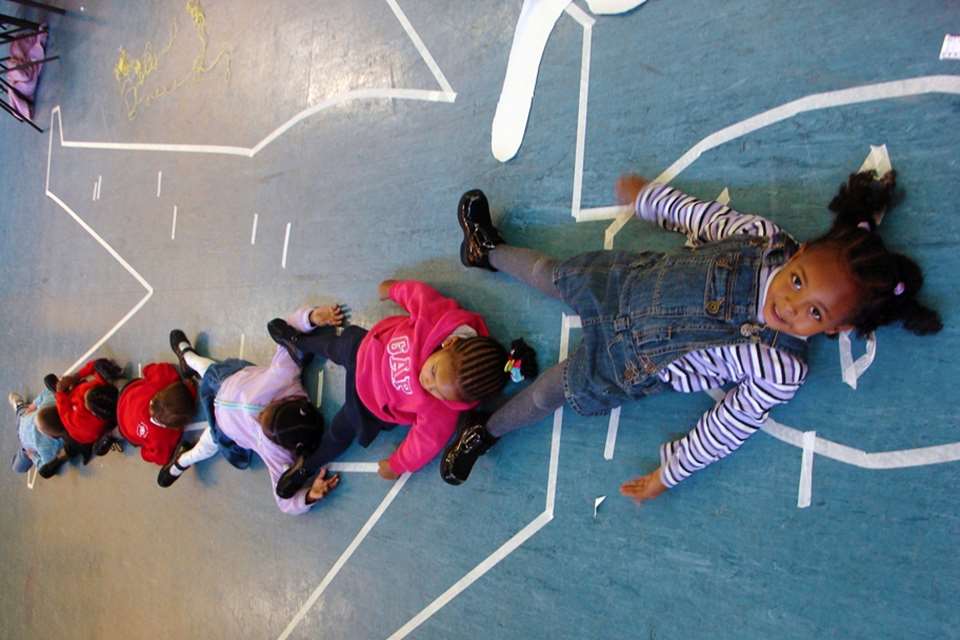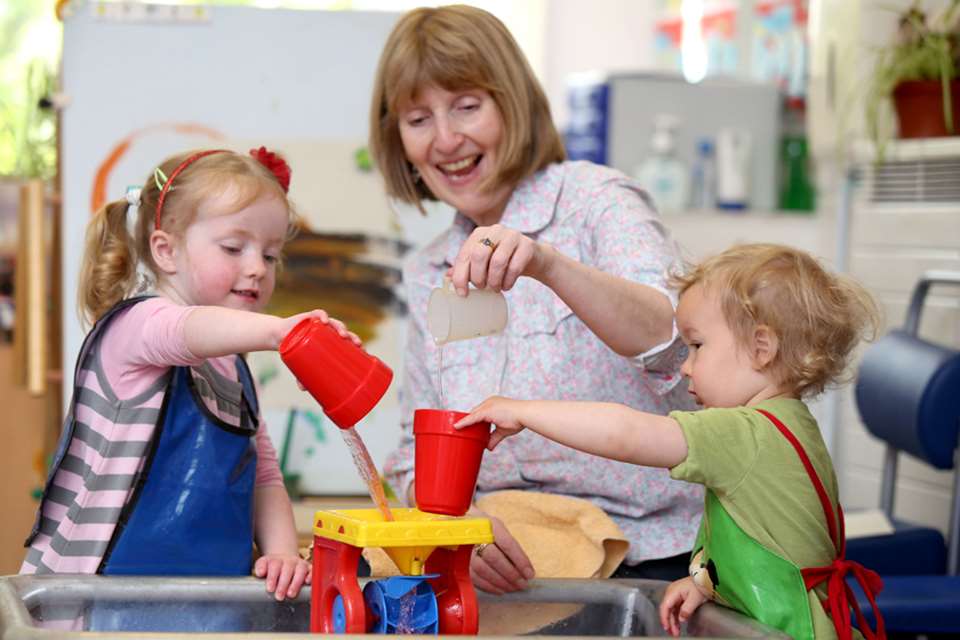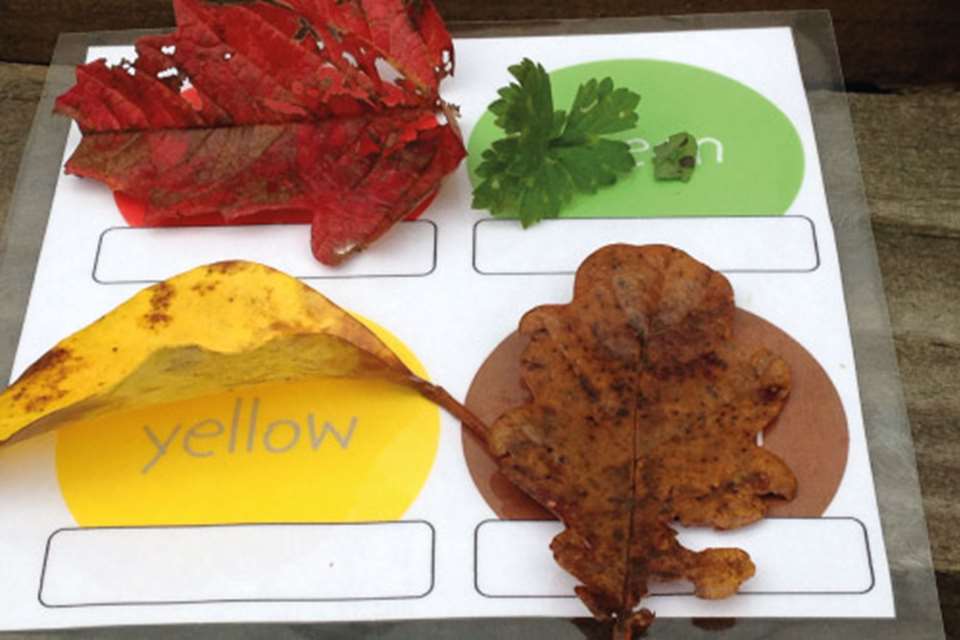Learning & Development: Maths - Weighing up progress
Rachele Parker and Lisa Swales
Monday, March 6, 2017
LEYF is improving boys’ maths learning at its settings. Rachele Parker and Lisa Swales explain how
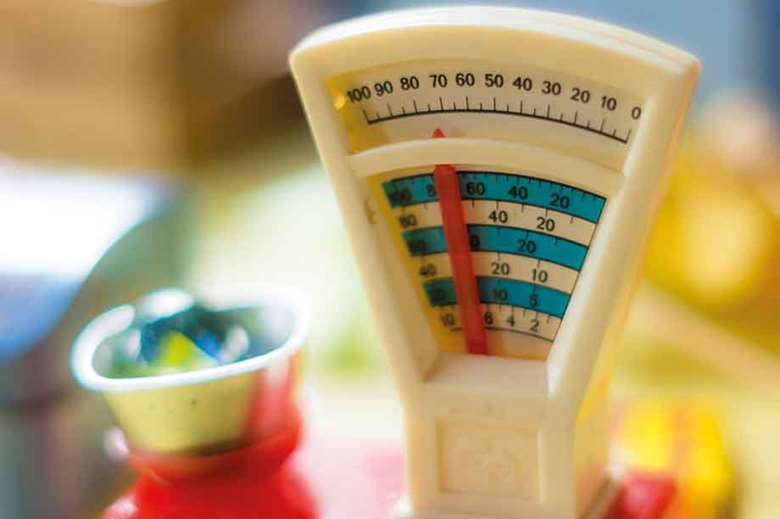
At LEYF, we have a clearly articulated pedagogy and set of methods for embedding best practice, including training, coaching, monitoring and peer-to-peer observations. Nevertheless, it’s always a challenge to ensure staff are following the pedagogy and operating within it consistently. One of our more successful methods in embedding best practice has been through action research, and one example of that has been our re-evaluation of how we support boys’ maths learning.
Action research encourages staff to observe, question, consider and reflect on what they see every day. What begins with an ‘I wonder’ can develop into a study that allows us to dig deeper and examine our practice, knowledge and understanding so we can do better for our children. So it was with maths.
LEYF’s approach to teaching maths is based on the principle that maths should be enjoyed and built into the nursery environment, routines and conversations. Alongside should be specific planned activities, both indoors and outside.
Our nurseries are expected to offer maths-rich environments that surround children with mathematical labels, signs, displays and resources. Staff are required to understand how to teach maths and are expected to cover all elements of maths in a broad range of contexts and in a fun way.
Children are encouraged to learn numbers, shapes, space and measures and be able to count, sort and match, seek patterns and use their knowledge and skills in all these areas to solve problems, generate new questions and make connections across other areas of learning and development.
However, in a busy nursery environment, practitioners can slip into focusing on the elements of maths with which they are more comfortable. That was our experience, and what we noticed in particular was a disproportionate focus on number, both in our teaching and in the environment.
Our observations coincided with disheartening national statistics on boys’ attainments in maths.
Our observations of maths in practice and the research on boys’ learning formed the basis of a hypothesis that we wanted to test. Were we encouraging boys to engage fully in the full range of maths experiences so they could exceed the depressing national statistics? We began by tracking cohorts across 12 of our nurseries. What we found confirmed our initial assumption that our nurseries were mirroring the national trend: boys were doing less well than girls.
THREE-MONTH PLAN
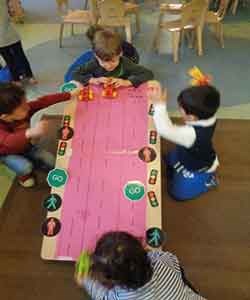 We then put in place a three-month plan to improve outcomes. We established a cohort baseline against the national average, agreed a set of pedagogical interventions with supporting documents to track and monitor the impact, and invited 12 deputy managers to lead a maths initiative. It was essential that the new activities and improved maths environments not only followed children’s interests but also extended their learning across the spectrum of early maths.
We then put in place a three-month plan to improve outcomes. We established a cohort baseline against the national average, agreed a set of pedagogical interventions with supporting documents to track and monitor the impact, and invited 12 deputy managers to lead a maths initiative. It was essential that the new activities and improved maths environments not only followed children’s interests but also extended their learning across the spectrum of early maths.
The teams would discuss their observations at staff meetings to initiate pedagogical discussions, increase their own learning, evaluate the success of the activities and ensure that the LEYF approach to maths was embedded. The learning loop was vital because while action research starts with a question, it needs to conclude with a strategy for improvement and replication across the nurseries.
During the three months, we developed a broad range of mathematical experiences so all children became better aware of number, counting in sequence and calculation. We also designed activities that would appeal to boys.
As expected, transport-led activities were popular such as measuring cars and dinosaurs and then estimating which was heavier, the Tyrannosaurus or the People Carrier. Taping pencils to cars for writing the results proved very popular. The boys had great fun freezing cars or dinosaurs in a block of ice and watching the ice melt to discover what would be revealed. This led to interesting and provocative conversations that included space, shape and measure.
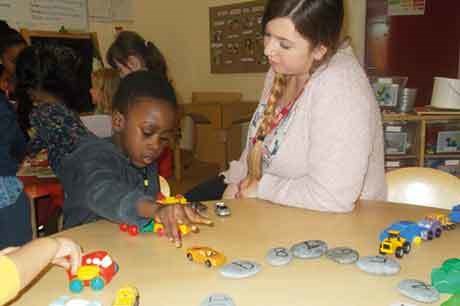 In particular, we helped staff understand the purpose and benefit of activities such as:
In particular, we helped staff understand the purpose and benefit of activities such as:
• Using the LEYF Tactile Numberline, which is designed and made by the children, making it a more effective teaching tool.
• Teaching children about money by building it into role-play areas, by adding props such as coins, receipts, invoices, bills, travel cards and credit cards.
• Using maths resources outdoors such as the magnetic number board, huge dice, darts, rounders, skittles, a large hopscotch and other such games that can be marked out easily with chalk.
• Increasing the role-play opportunities for maths learning outdoors. The boys loved shops built out of recyclables and using bikes as delivery vans with numbered (and lettered) parking spaces.
• Involving the children in making displays; for example, making their own pictograms of lunch choices and then developing this as a 3D representation using bricks to allow discussion of the most popular choices.
• Amending familiar counting songs and making our own using children’s favourite items to support them in calculating.
• Providing resources to support one-to-one correspondences; for example, giving each dolly a car.
• Asking children to count an irregular arrangement of up to 10 objects; for example, when Zara said ‘Listen for how many’, as she dropped pennies into the tin.
• Allowing children to understand that one thing can be divided and shared; for example, a pizza.
• Using number language – for example, ‘one’, ‘two’, ‘three’, ‘lots’, ‘hundreds’, ‘how many’ and ‘count’, ‘more’ and ‘a lot’ – in activities, routines and everyday situations, such as doing up coat buttons.
• Modelling mathematical vocabulary better during daily routines and activities, such as, ‘Have you put out too many cups for snacktime?’ ‘If we put one away, will we have enough for everyone?’ ‘How much juice would you like?’ ‘Do we need more parking places for the bikes?’ ‘Can you tell me how many bikes will be left out if we put one in the shed?’
• Encouraging children to estimate; for example, estimating how many sandwiches to make for teatime.
• Creating real-life problems involving mathematical thinking – for example, ‘I don’t think we’ve got enough spoons. How many do we need for everyone in this group to have one?’ ‘How am I going to fit all the blocks in this box?’
We also paid more attention to:
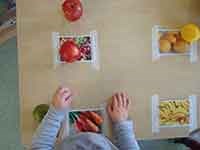 • using mathematical language outside
• using mathematical language outside
• using the language of measurement (longer/shorter/taller/heavier than, deep, shallow, thick, thin, more, less, etc) and introducing non-standard units of measure (handprints, strides, jumps, etc)
• supporting children’s understanding of pattern and its many types (such as repeating, growth, symmetrical, radial and cyclic).
Throughout this period, we continued to assess the children and, at the beginning of November, we tracked the boys again and were delighted to find that across the 12 nurseries, they had made measurable progress in their maths development. They had moved from being behind to achieving and exceeding within their developmentally appropriate age range.
This project has reminded us of the importance of embedding the LEYF approach to maths in all our nurseries. It has highlighted too the need to pay attention to the activities and resources that we use and challenge ourselves to design and extend more attractive activities.
In general, it confirms that by conducting action research in our nurseries, we are empowering our teams to make beneficial changes for our children, not just for now but for the future as well.
HOME LEARNING
The LEYF pedagogy recognises the importance of home learning and the many ways of involving parents in their children’s development. One of our favourite ways of doing this is to make home learning bags. As a consequence of our maths action research, we have increased the number of bags with mathematical props to encourage learning in the home and the wider environment. We have begun encouraging parents to:
• notice and follow their children’s ability to spot number in different contexts – for example, in supermarkets
• support their children’s interest in counting
• notice and name different colours
• explore and name shapes within the environment
• introduce mathematical language wherever possible.
Rachele Parker and Lisa Swales are London Early Years Foundation area managers, www.leyf.org.uk


